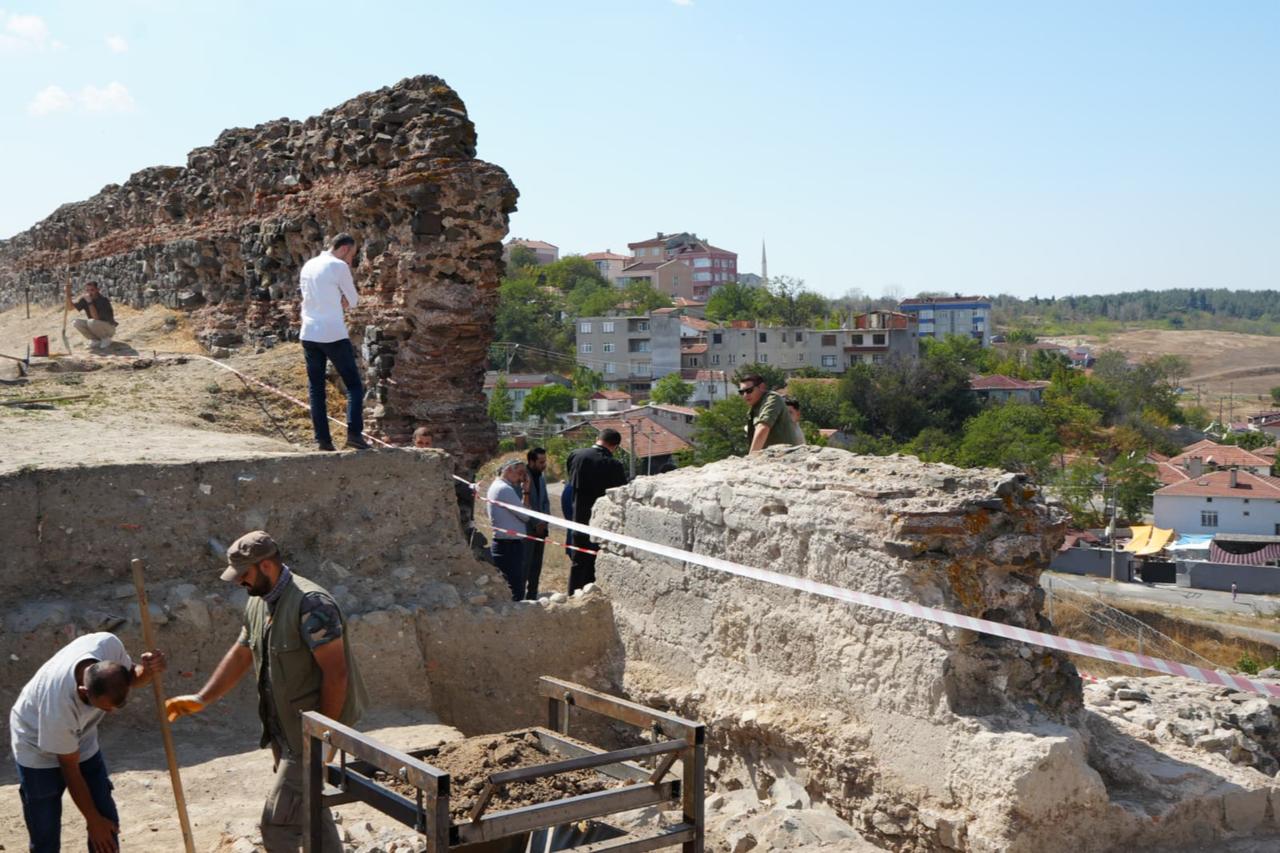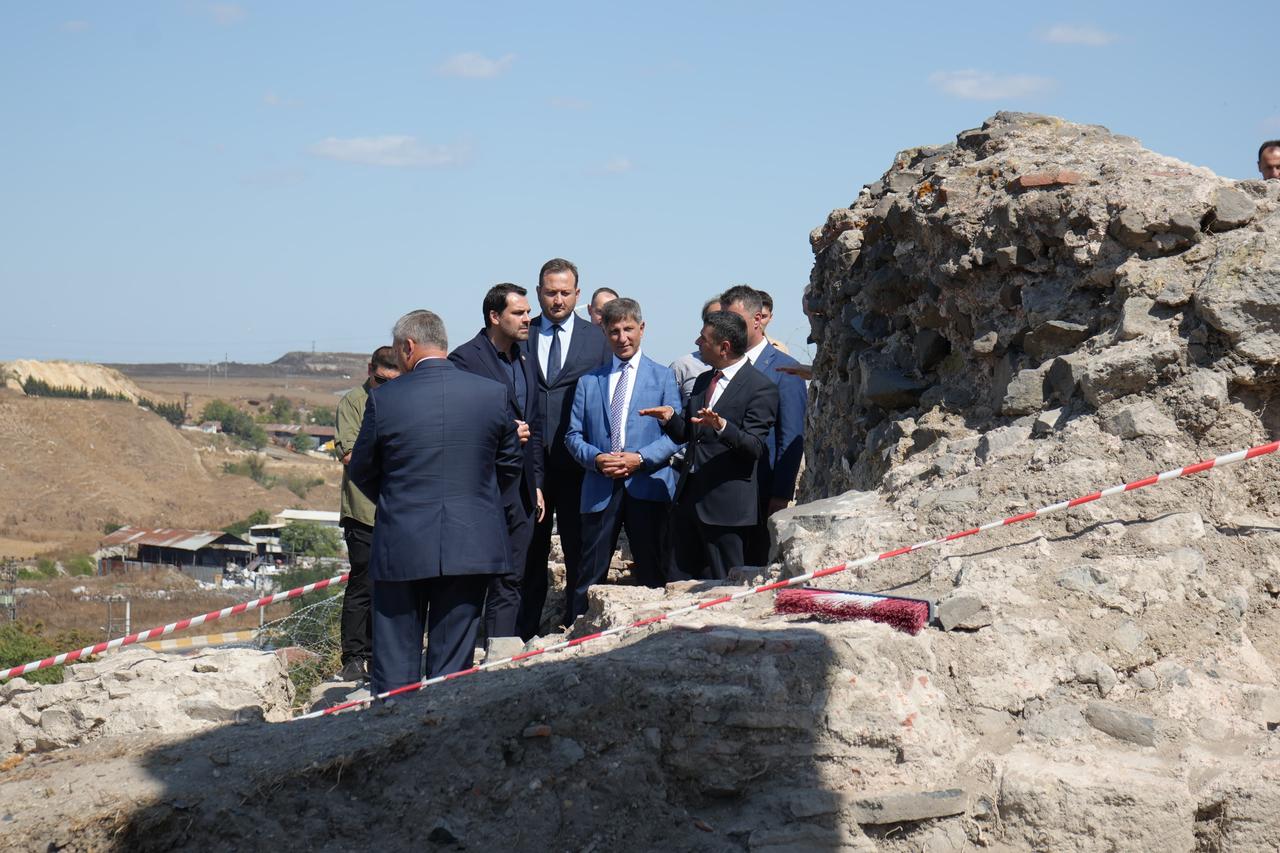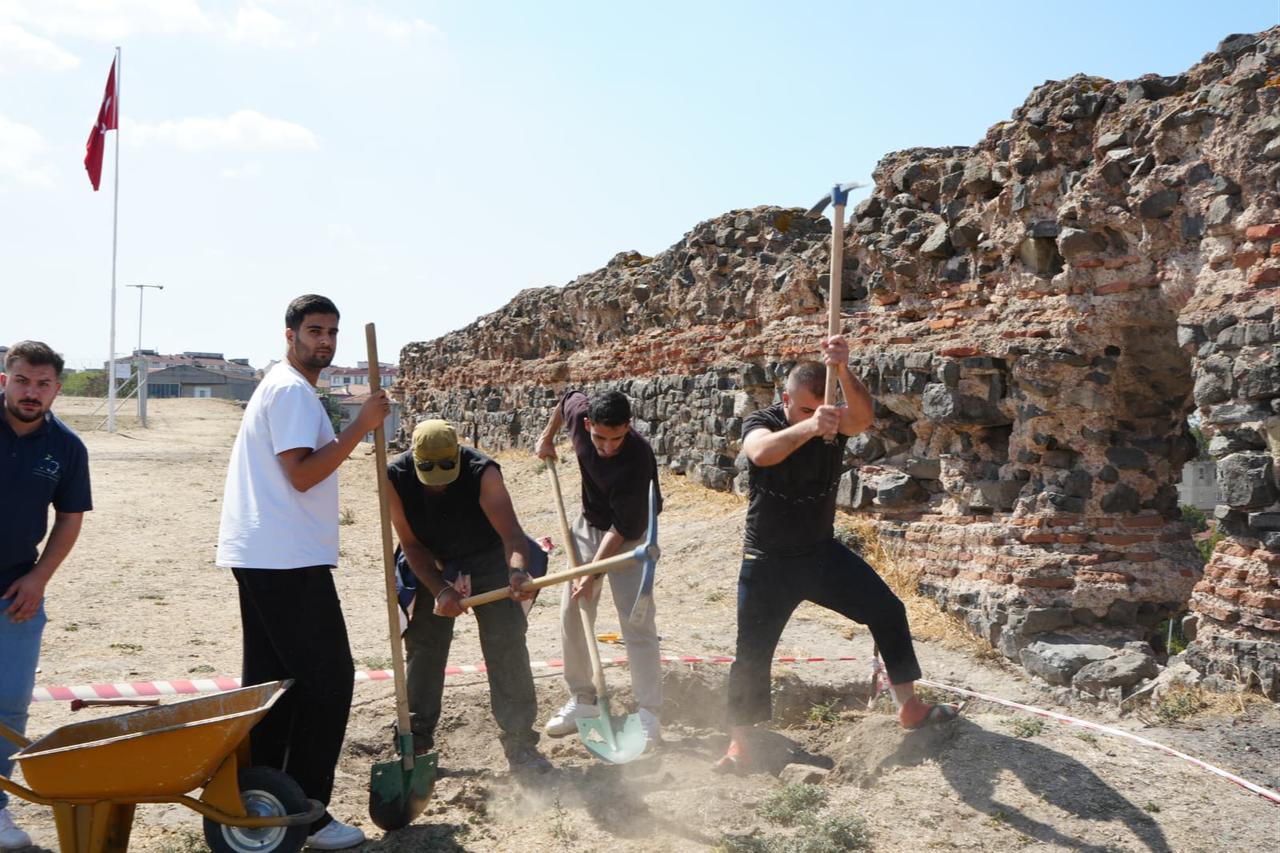
Archaeologists have launched extensive rescue excavations at Corlu Castle, a medieval fortress in the Corlu district of Tekirdag province. Long believed to have been a strategic outpost during the Early Byzantine period, the castle is now the focus of a collaborative project led by the Tekirdag Museum Directorate in partnership with Namik Kemal University and the Corlu Municipality.
The excavation campaign aims to uncover the castle’s architectural remains and preserve them for future generations. Museum Director Abdulgani Tarkan, who oversees the project, explained that the team includes restorers, an art historian, two archaeologists, and approximately 20 workers. The site spans nearly 29,000 square meters, offering researchers a rare opportunity to study a fortress of such historical significance.
Officials visiting the excavation site, including Justice and Development Party (AK Party) Tekirdag Deputy Gokhan Diktas, Corlu District Governor Niyazi Erten, and Corlu Mayor Ahmet Sarikurt, were briefed on the ongoing work by Tarkan and Dr. Serhat Foca, a scientific consultant from Namik Kemal University’s Archaeology Department.

Historical records indicate that the settlement now known as Corlu was once called Tzurulon during Roman times and sat along the Via Militaris, an important military and trade route. It served as a mansio, a rest stop for travelers and the military. By the late fourth century, the town had achieved municipium status, elevating its administrative importance under the Eastern Roman Empire.
Corlu Castle itself is thought to have been constructed in the sixth century. Built with rubble stone, brick, and Khorasan mortar, the fortress once included walls, bastions, and gates, of which only fragments remain today. Over the centuries, the castle witnessed multiple sieges, including attacks by the Slavs in 550 A.D. and the Avars in 592 A.D., who captured key commanders.
By the eighth century, the settlement had become a bishopric, and in the mid-14th century, it came under Ottoman rule during the reign of Sultan Murad I.

The current excavation seeks not only to reveal structural remnants but also to provide insight into the castle’s role within the broader Byzantine defensive system. Researchers hope to recover architectural features, artifacts, and evidence of daily life within the fortress. Dr. Foca noted that findings could illuminate how regional defenses operated prior to the construction of the Anastasian Wall, a major fortification line near Istanbul.
Once the excavation and analysis are complete, plans include restoring preserved sections of the fortress, implementing long-term conservation strategies, and potentially opening the site to the public as a cultural heritage attraction.
“The Corlu Castle excavation is a window into the region’s layered history,” Director Tarkan said. “Each discovery brings us closer to understanding the daily life, architecture, and military strategies of past civilizations in this area.”